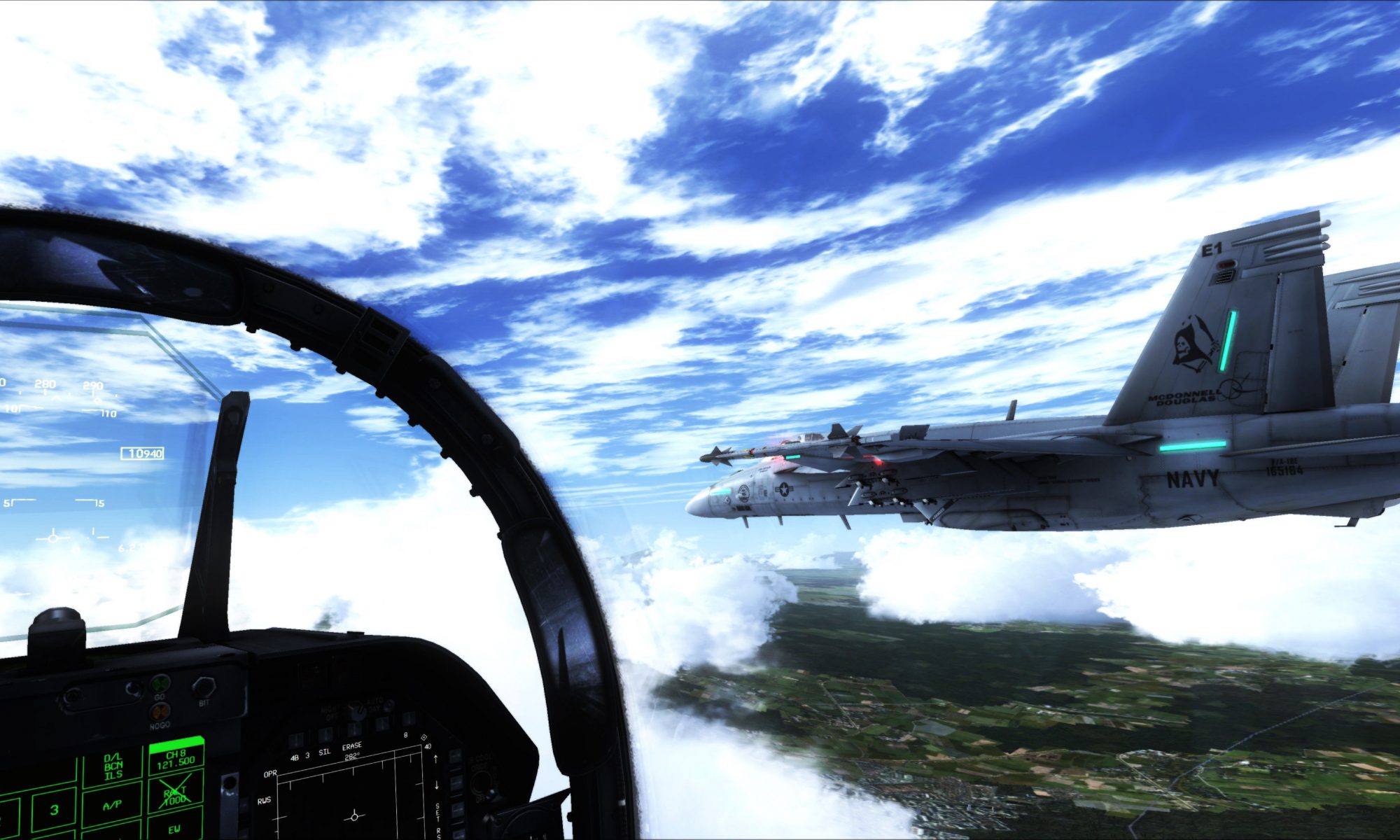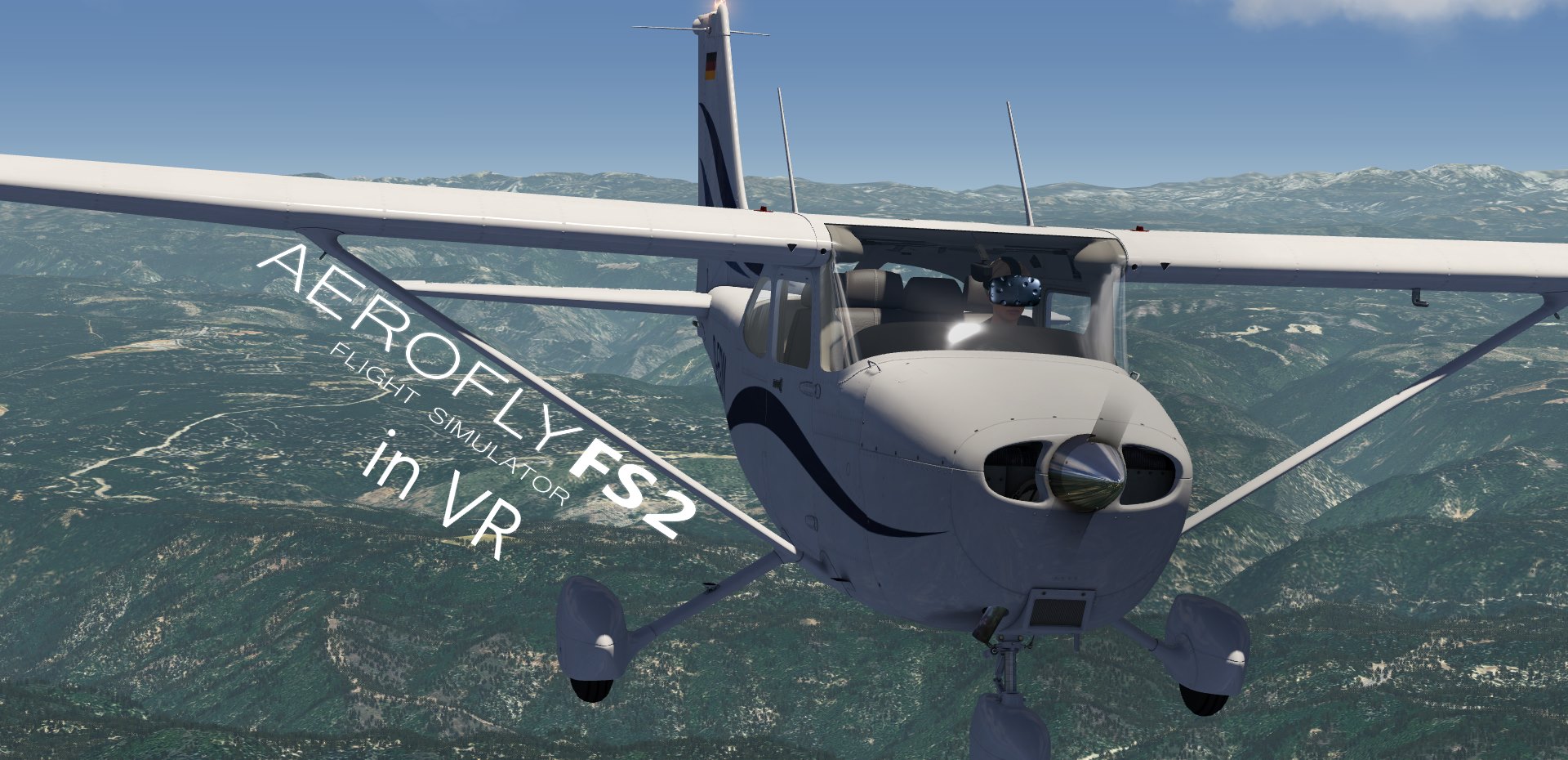Some time ago I wrote about Aerofly FS 2 (Homepage). In my post I talked about it's shortcomings, but also how it's VR might be the best on the market for flight sims as it was back then. Unnoticed by me they rolled out an update in February 2018, so it's time for an update of my review, too!
First Things First: Re-acquiring the Colossus
I had since uninstalled Aerofy FS 2. It was just sitting there, taking up 100GB of space on my SSD, but I never flew it since I had no incentive to do so. The limited scenery, the lack of aerotow for gliders, and the shallow system detail in the larger planes just made it that much less interesting. Every time I chose in-depth systems on a flat screen over arcade-y planes in VR when I wanted to do some flight simming.
So here we go: 50 GB for the simulation - which in itself is pretty impressive already for size - and another 50 for the high-res area within the USA. Currently there's still no mesh for Europe (Switzerland excluded), save the small island of Helgoland, Germany and the ORBX airport LOWI Innsbruck for only (giggle) 31.95€. Neither of which I deem worthy of my money right now. Where would I go to from Helgoland? I could fly over potato quality Germany to Innsbruck, Austria and back - that's it for Europe. No thanks! Well, actually there's Switzerland as well, so add a few airports south of Germany. Still, long(er) flights across Europe are still pretty much impossible.
Turns Out Size Isn't Everything
(Unless it's the size of the game world maybe)
While Aerofly FS 2 can easily compete with other flight sims in sheer file size, it's content still pales in comparison to the likes of P3D. There's more of the US to fly in now, with free Utah and Colorado DLC, and I appreciate the work that must've gone into that. But where do the 50GB for the base game come from? I still wish there was at least some bearable autogen scenery like FSX, P3D and X-Plane offer, but there's only a blurry wasteland to be found in Europe, Africa, and Asia.
There's no high quality, high detail aircraft shipped with the game, either. The C172 has an engine start-stop feature, that's the most system detail I could spot. Still lacking here for sure!
But the Post is Titled "Aerofly FS 2 in VR"!
Yes, you're right. I'm complaining about the same issues again. So let's put everything else aside and focus on the actual topic. Let's act as if system depth and world size don't matter to me. Let's look at VR!
As of February 2018, the Aerofly FS 2 changelog reads the following:
Aerofly FS 2 VR Hands Have Arrived!
Wow!
...okay, in itself that is not very exciting. But this change means one thing in particular: IPACS recognized the interest in a well rounded flight sim VR system. And they're starting to work on that.
Being able to "touch" the controls in VR makes things a lot easier compared to fiddling with a mouse. Also, this is not "point and click" with a controller, oh no - you get actual virtual hands!
A Satisfying Experience...
You start the game in the menu, so we'll start there, too. You control it like a touch screen and it's actually pretty cool to use. While I criticized the menu when using a mouse, it works exceptionally well in VR.
To flip a switch in the cockpit you simply put your virtual finger next to it and drag it in the right direction. Buttons are operated by simply touching them. With a very satisfying haptic feedback click, the switch moves into position. I think it is the most satisfying thing I have ever done in VR! Just flicking switches and pressing buttons. It's so satisfying! Have I said it enough now? Alright. But it really is.
While my joy was dampened a bit when I realized most of the switches in the 737 don't work, I was quite happy once I went back to flipping those that do. Amazing job there IPACS. It's such a simple thing, yet very essential. You got it right, as right as you can get it. Awesome!
If you need to rest you hands, the Vive's touch pads can be used like gamepad sticks to control the plane. This works okay, but isn't any better than a gamepad either. And we all know why we don't use those for simulation: It's too imprecise.
...Until It Goes Wrong
On the other hand (no pun intended) there's a lack of feedback when grabbing flight controls. This one's certainly harder to get right, but currently there's none whatsoever. Blindly grabbing a throttle lever, stick or yoke, which is trivial with actual hardware, is virtually impossible because you don't feel anything.
Even when looking at what I'm trying to grab I often miss it, like throttle levers, because there's no feedback to let me know whether I successfully grabbed it or not, nor where I should move in order to successfully do so.
There is also nothing indicating when you've reached the edge of a control's range, like pulling the yoke, and it might even snap to the other end of the range. Quite often I've been trying to pull right, but it snapped to full left. A hard crash and motion sickness were almost guaranteed.
So you either gauge everything visually, which prevents you from looking outside and actually flying, or your drag your hand where you think it needs to be, which often leads to the unexpected behavior described above.
How Would I Fix the Controls?
What would help a lot - in my opinion - is a better indication of where your "hands" are. Touching and moving controls should produce a slight vibration. Much like turning a knob with indents, you should feel how much you're moving it. Many other VR games do this. The closer you get to the edge, the more it should be vibrating constantly, to indicate more "resistance" from being away from the center. Once the edge is reached, it should "click", so you can feel you've hit the limits, and maybe stop vibrating. This is also used by others to simulate resistance.
This is of course a very basic concept and would need a lot of tuning. But I think it really would help a lot. In the mean time, while flicking buttons is a lot of fun, I can't fly without actual hardware, which in turn I can't use with VR controllers in my hands.
Final Words and Recommendation
Aerofly FS 2's VR has improved a lot since I last tried it, that's for sure. While it still lacks in other areas this is forgivable if seen as a VR game. It still has great performance, beautiful visuals, and now offers very good immersion, too.
But it's to be taken with a grain of salt. Latest Aerofly FS 2 reviews on Steam are still merely "mixed". I can see why: The price tag is still a little high for what it offers. DLC pricing is typically overpriced, which is nothing new for us flight simmers. Planes and their physics aren't detailed enough for hardcore simulation fans. Scenery for flying outside the US is practically nonexistent. People who enjoy group flights still hope for multiplayer capability, while single player content is too sparse with no ATC or AI traffic. And to top it all off: It's currently June, and there were no news since the February VR update. Let's hope they're working on something big and game changing!
Aerofly FS 2 has all the right ingredients to attract everyone, from casual gamers and VR enthusiasts all the way to hardcore simmers, yet not quite enough to fully please any of these crowds. So right now I am still reluctant to recommend it. It's good, but not yet great.
7/10. Get it on sale and see how it feels. Still too shallow, but going somewhere... Slowly. - Mazzn
I really, really want Aerofly FS 2 to succeed, it all looks so good, it's just not quite there yet. I still feel like it's pre-release and hope they get past that point soon.


One Reply to “Aerofly FS 2 (in VR): An Updated Review”